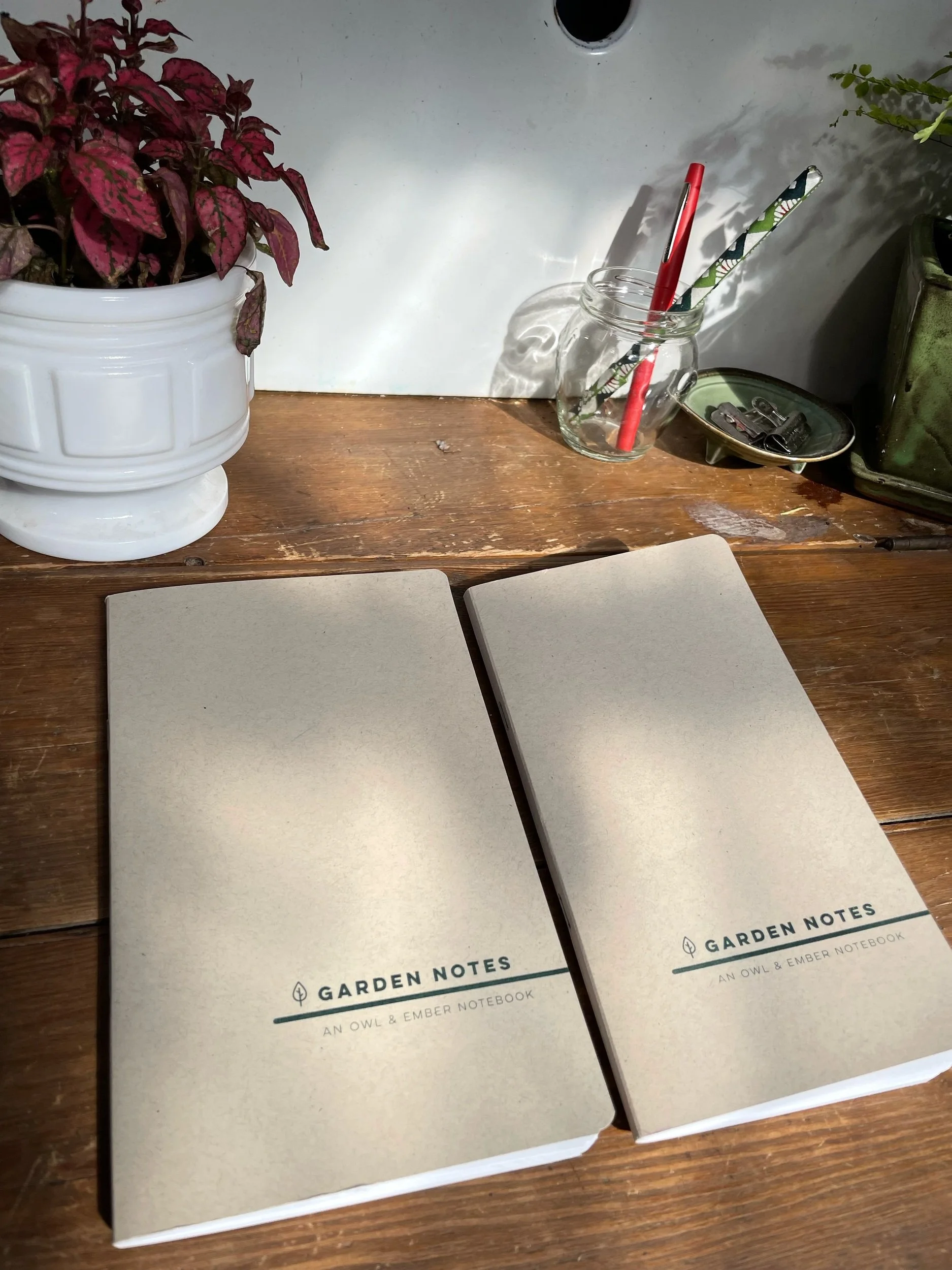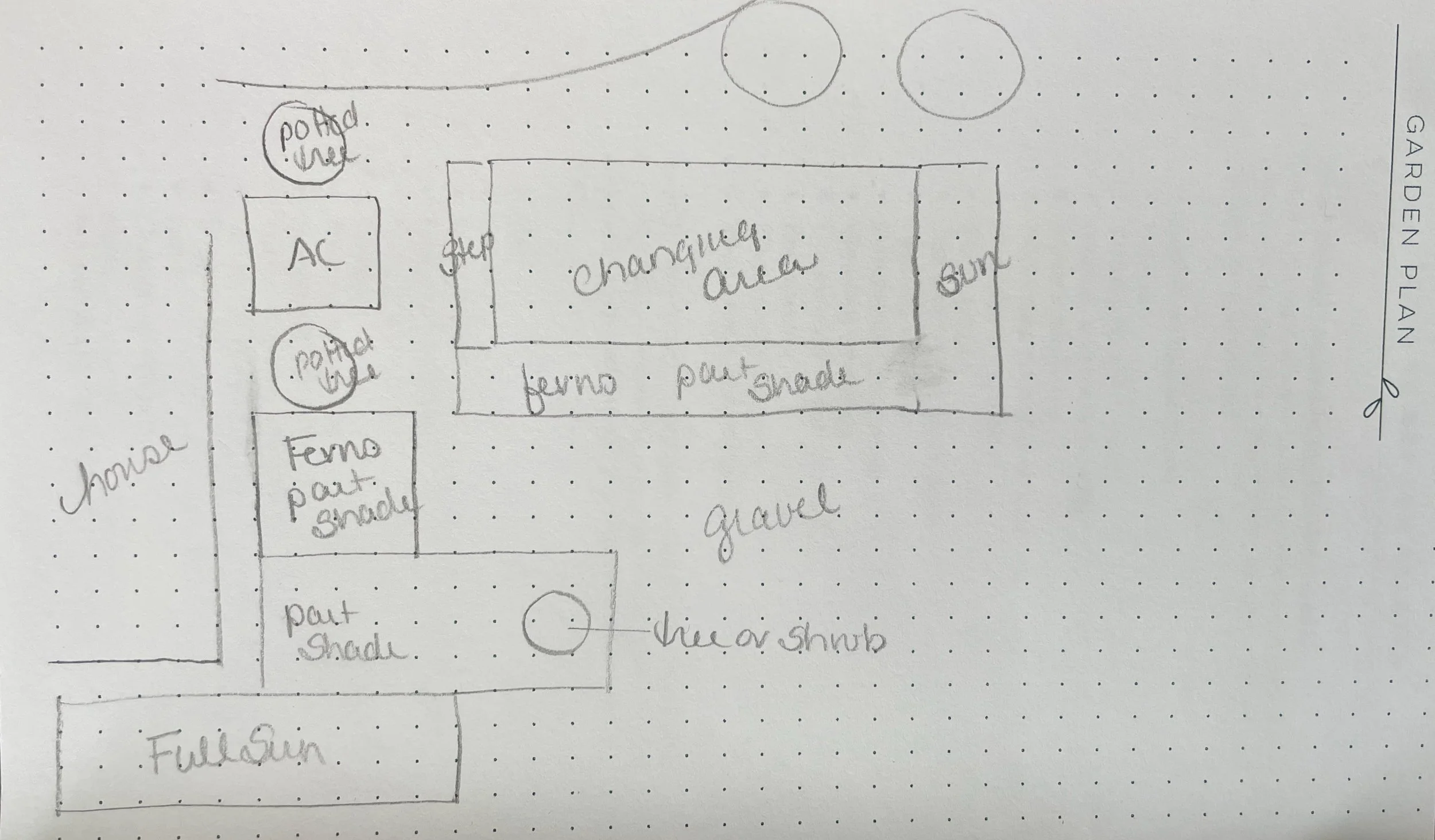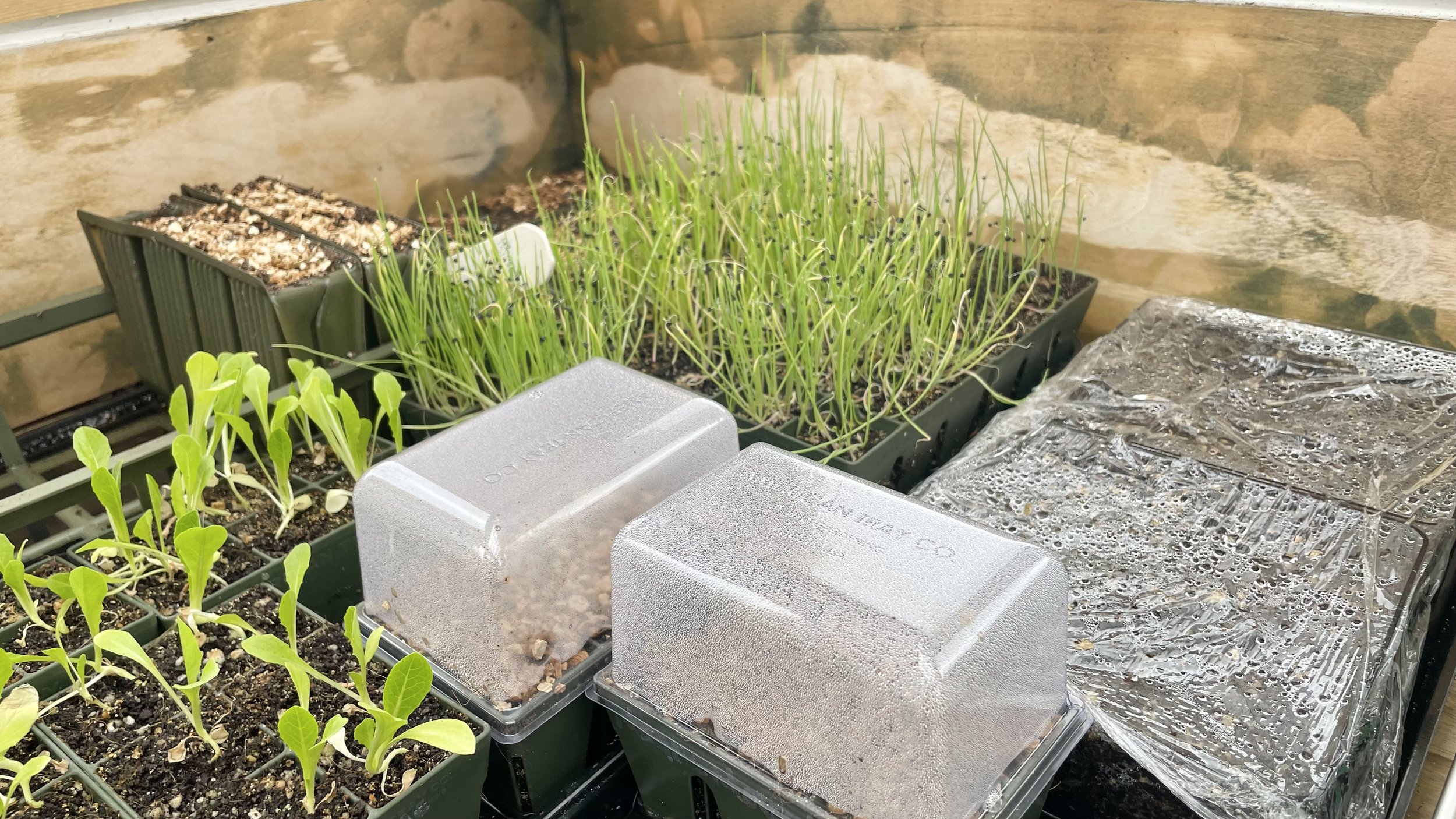Weekly Gardening Checklist | First Week of February
As the days get a little longer and the sun feels just a little warmer, we know that spring is coming. It is only six weeks away! But it's still winter for most of us in the Northern Hemisphere, and snow and cold are still on the horizon. Nonetheless, there are things we can do to get ready for the growing season ahead.
Here is your Weekly Gardening Checklist for the First Week of February:
Set Up Your Gardening Planner
This can be as simple as a notebook, or it can be an intentional planner like my own Garden Notes – a simple gardening planner I wrote which is available here. A gardening planner allows you to dream and record and plan – all in one place.
Garden Notes has a two-page spread per week plus a monthly task list, so the first thing I do is to set out all of the dates in the planner. Then I write down a range of things including:
Seeds I have ordered – and I mark when they arrive
My first and last frost dates
Record your growing zone if that's something you don't already know
Goals, ideas, or reminders for each month
When I place a seed order or do a specific task or go shopping at a garden center, I record it in my Garden Notes. I also print out photographs and paste them inside for a visual record of when flowers bloom, problems with particular plants, or placement of herbaceous perennials.
Using a gardening planner has changed HOW I garden. I am more intentional, more deliberate, and I remember those ideas I have in the middle of winter that, before I used a planner, I would forget by spring. It has also helped me to save money. When I have a wish list to work from – and a plan – I am not as easily swept away by impulse orders. I won't say that never happens. I am human, of course. But it doesn't happen as often.
So, setting up my Garden Notes for the year is one of the first things that I do. It's a gratifying and hopeful process!
Make a Drawing of your Garden Space
One of my biggest problems as a gardener is that my eyes are bigger than my garden! I walk into a garden center and think, "Of course I have room for five of those and a flat of these!" But in reality, gentle reader, I do NOT have as much room as I think!
A solution: create a drawing of your garden space. Use graph paper (or the graph paper pages in Garden Notes). Make it to scale which means measuring your space and then using one square per foot (or 4 squares depending on how big your graph paper is), draw out your design. This is as helpful for established gardens – draw in what is there, too! – as it is for new beds.
Make copies of your paper when it is done! Or scan it so you can print copies as needed.
Then start to play! Where do you want to plant that new rose bush? Or perhaps carrots should go there? What's sunny? What's shady?
Putting it all down on paper will help you start to see how your garden will come alive when everything is planted.
Plan Out Your Seed Orders
You'll notice that the word PLAN occurs a lot in this week's list. Seeds are an easy impulse buy, but rather than jumping right into those beautiful seed catalogues, take a pause. And make a plan!
Check the seeds you already have!
Have they been stored properly? If not, it might be time to replace them. Here are some tips on seed storage to help you make decisions.
Is it time to toss some of them?
Do you need to do a viability test on some of them? This post tells you how long most seeds will last, and how to check for viability. This is a good time to do that if you have some older seed packets.
Are there seeds you'll just never grow? Maybe it's time to donate them.
Which brings me to…
Donate seeds
If you have unopened packets of seed that you know you won't use, consider donating them. You may have a seed library or a seed swap locally – at your library or community center – where seeds can be exchanged.
Additionally, the Altadena Seed Library is looking for donations to help victims of the Altadena fires in California. The address to send seeds is below:
Altadena Seed Library
37 Auburn Ave. #8
Sierra Madre, CA
91024
NOW… make a list and check it twice!
What are you hoping to grow this year? Be realistic – and I know that can be hard – but less can be more, especially if you are a beginner gardener. But also: try a few things you have never tried before! It's always fun to see what comes up and how it does!
If you have no idea where to start, here are a few suggestions:
Veggies: if your aim is to grow vegetables, consider starting with
Carrots: best sown in the spring, take a long time to grow, but are pretty easy as long as you keep them watered
Lettuce: choose cut-and-come-again varieties which means you can cut them and get 2-3 harvests per plant. They are easier to grow than head lettuces and are quicker, too.
Spinach: one of the easiest and most gratifying crops to grow! I like my spinach young, so I treat it like a cut-and-come-again crop. I harvest it over and over again until it gets too hot and starts to bolt (set seeds).
Tomatoes: choose a cherry tomato variety – you'll have them all summer long! And one or two larger tomato varieties depending on how much space you have. Pressed for space? Choose patio varieties which are intended to be grown in containers and are quite compact.
Onions: onions are really easy to grow from seed. I start mine inside and then plant them out in late April.
Flowers: if you are wanting a beginner flower garden, think about starting with these:
Sunflowers: there are varieties that are HUGE and many that are petite, but there is a sunflower for every garden, and they are a keystone species in North America. They will tell the bees and bugs: "This garden has it all!" And they are easy to start from seed. I just put the seeds directly in the soil about 3 weeks before my last frost date.
Marigolds: another easy flower to start from seed. Marigolds can be a good supplement to a veggie garden. I grow them with my tomatoes. Their flowers also attract the pollinators who will then pollinate your tomatoes as well.
Dill: dill is a host for multiple butterfly species, plus it is delicious! So I grow it both for the flowers and for the leaves (fabulous on salmon). The flat shape of the flowers makes dill an ideal landing spot for butterflies, so definitely plant some!
Zinnias: another easy flower, and Zinnias are native to North and Central America. Their cheerful flowers make any garden prettier, and they are another plant that is easy to grow inside or out. I start mine inside and direct sow them outside as well.
Snapdragons: while the bees love them, I grow snapdragons for me! They are so beautiful, and they come in so many lovely colors. I love them in a bouquet on my table.
That's just a beginning list! Every Monday I have a plant recommendation for Plant of the Week which will give you lots more ideas.
Once you know WHAT you want to grow, I suggest reaching out to your county extension office to chat with the Master Gardeners who can make recommendations about specific varieties that do well in your area. For example, they may have a Top Ten Tomatoes for Tennessee list. Those MGs are a great, free resource!
Not sure where to order seeds?
I will have more on that topic later this week, but here are a few of my favorite resources:
And that is your Weekly Gardening Checklist!
The Weekly Gardening Checklist comes to you each Wednesday — a low-stress list of reminders for gardeners in North America and beyond! Happy Gardening!






